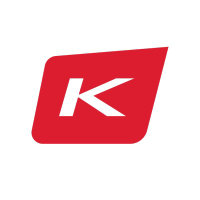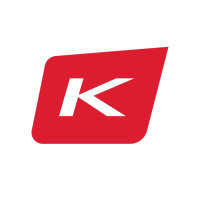
Kinaxis Inc
TSX:KXS

Kinaxis Inc
In the bustling landscape of enterprise software, Kinaxis Inc. emerges as a dynamic force, spearheading innovation in supply chain management solutions. Founded in 1984, this Canadian company has carved a niche offering comprehensive cloud-based services that empower businesses to streamline their supply chain operations. The company's flagship product, RapidResponse, integrates demand planning, inventory management, and capacity scheduling, providing a real-time glimpse into logistical data. This innovative platform allows companies across various industries—ranging from pharmaceuticals to automotive—to make informed, agile decisions that enhance efficiency and reduce costs. By harnessing the power of digital transformation, Kinaxis not only addresses the complexities inherent in modern supply chains but also anticipates potential disruptions, offering its clients a competitive edge in an increasingly unpredictable market.
Kinaxis's business model is primarily subscription-based, generating a steady revenue stream by licensing its software to businesses on an annual or multi-year basis. This approach ensures a recurring income while fostering long-term relationships with its clientele. Furthermore, the company invests significantly in research and development, continually refining its technology to maintain a cutting-edge advantage. The blend of robust analytics, machine learning capabilities, and a cloud-based platform positions Kinaxis as an indispensable ally for businesses looking to optimize their supply chains. Through its proactive solutions, the company not only enhances operational transparency but also fortifies its market position by demonstrating tangible value-driven results, making Kinaxis a key player in the global supply chain management domain.
Earnings Calls
In the first quarter, the company reported net trading revenue of GBP 209 million, an impressive 62% increase year-over-year. This growth was fueled by heightened trading activity and a 50% rise in active clients, totaling over 200,000. The core markets division performed well with revenues up 56% at GBP 170.8 million. Additionally, strategic pricing changes attracted 34,600 new clients, marking a 129% year-on-year increase. While the company anticipates revenue normalization this financial year, it aims for GBP 100 million in incremental revenue by FY '22. No major regulatory developments were noted, and existing guidance on costs remains consistent with revenues.


















































 You don't have any saved screeners yet
You don't have any saved screeners yet

Ladies and gentlemen, welcome to the Q1 full year 2021 revenue update call. My name is Stuart, and I'll be the operator for your call this morning. [Operator Instructions]I will now hand you over to Charlie Rozes, Chief Financial Officer. Please go ahead.
Thank you. Good morning, everyone. I'm Charlie Rozes, the IG Group's CFO, and I'm actually speaking to you from our London office this morning, which we reopened at the start of September. I'm also joined by Karen Toh, our Director of Group Finance; and Liz Scorer, our Head of Investor Relations.I'm sure you've already seen our very positive announcement this morning on our first quarter group revenue performance. Before opening the lines to questions, I'd like to just take a couple of minutes and take you through a few key highlights.Net trading revenue was clearly very strong at GBP 209 million, up 62% on the prior year. This performance was driven by continued high levels of trading activity by existing clients and also growth in the active client base, with over 200,000 active clients in the quarter, representing a 50% increase on the prior year and also up 1% on our record Q4.Throughout the first quarter, we continued to see elevated levels of market volatility, in which our clients saw opportunities to trade across all asset classes. Our core markets businesses continued to perform very well, with revenue up 56% on the prior year at GBP 170.8 million. Strong growth in the retail client base within the U.K. and Europe was a standout from these businesses.Performance across the group's significant opportunities portfolio remained on track to deliver the planned GBP 100 million in incremental revenue by the end of FY '22, with revenue up 94% on the prior year, at GBP 38.2 million.I know that significant opportunities are a key area of interest for you all, so before you ask, we are planning to provide more color on the performance of each of the opportunities as part of our interim results in January.Let me move on briefly to client acquisition. We continue to see strong demand for our products throughout the quarter. And when combined with improvements in marketing effectiveness, we onboarded over 34,600 new clients to the group, up 129% year-on-year, with about 2/3 of these clients trading our OTC leveraged products.We also saw good retention rates in the period, with rates following similar trajectories to historical averages across all of the client cohorts that we track and manage, including the Q4 client cohort, which is encouraging to see. We continue to closely monitor the behavior of all of these cohorts in the context of the exceptional trading condition that we continue to experience.I don't have any updates to our earlier full year cost guidance other than to remind you that some of our cost lines are correlated to revenue, such as card charges, some types of marketing expense and variable remuneration. So these, of course, will depend on the revenue outturn for the full year.Lastly, from a regulatory perspective, there haven't been any material developments in the quarter, which means, as we said at the time of our prelims, we're still awaiting a decision from the Australian regulator on the outcome of their consultation into the offering of CFDs to retail clients. We do, however, still expect an announcement from them within this financial year.So to wrap up, we're really encouraged by the start to the financial year, with this quarter being particularly strong in terms of revenue. Consistent with our previous guidance, there's been some moderation from the revenue levels achieved in Q4, and we continue to anticipate that normalization will occur in the course of this year. Elevated levels of market uncertainty and volatility, nonetheless, create a lot of opportunities for our clients to trade, and the high number of active clients in the quarter clearly reflected this.That's all I've got for now. So thank you, and I'll now open the line for questions.
[Operator Instructions] Your first telephone question today is from the line of Ian White from Autonomous Research.
Can I just ask a couple on Spectrum, please? Just -- I think in the full year presentation, on the results, you mentioned you were in discussion with one broker, I think, regarding connections to Spectrum. So could you just provide us an update on where discussions are in terms of connecting brokers and market makers at Spectrum, please? That's the first question.And just secondly, can you help me understand how would broker connections impact the economics of that business? So if trading volume were to double, for example, but all of the incremental volume came through brokers that have been connected to the platform, what would happen to revenue under those circumstances, please?
Yes. So let me just give you a couple of things on it. As I said, I mean, we'll talk in more detail about where we are with the exchanges at the half year. I mean we do have discussions that are underway, and we actually have some testing underway to connect some new brokers onto the platform. So those are underway right now, and I would just say watch this space. I think we're pleased with the progress that we're making on it. We spend a lot of time getting to the point that we're at right now in development. And again, I think we're still encouraged by what we see in that space.In terms of the economics, I mean, as the exchange grows and there are more brokers, there are more market makers, et cetera, I mean, I wouldn't give any specific guidance on how I think those economics might work. I think it's obviously a competitive space, and we need to be competitive in that market. But I would just say that the more activity we can get running through the exchange, I think the more visibility we can get to it, I just think that rising tide will lift all the boats around it. So...
[Operator Instructions] Next question comes from the line of Rahim Karim from Liberum.
Just kind of a quick question on the stock trading investment performance, very strong. If you're able to give any color on what's driven that during the period. And then just on your comments regarding the trajectories of kind of retention rates for the kind of fourth quarter cohort, if you're able to provide any color on that.And then kind of finally, just on the locations of the new clients onboarded during the period, if there's any color you can give on that, that would be greatly appreciated.
Yes. I think I'll try to take them in a reverse order. In terms of the mix and where they're from, that's followed similar patterns to what we've seen previously. So there haven't been any, I would say, really discernible shifts or changes in either the markets or the parts of the world where new clients are coming in.I mean some of the rates of growth are a bit quicker, say, like in the U.S. coming off smaller bases, slightly younger demographic there, just for example. So there are some small changes, but there aren't any pronounced shifts from what we've been seeing more recently.I think your second question was on...
Just the fourth quarter cohort. You talked about retention. I was just wondering if there's any color.
So those -- again, those have continued. So I would just take you back to what we said at the full year at the end of July. The attrition rate at the time was slightly higher than what we've seen with other cohorts. That rate has now continued, but it isn't something that I would flag. I think from our view, that isn't unusual, I think, given the circumstances in the fourth quarter.We have seen some attrition of what we think are maybe more lower-value clients, ones who came in and have come off the platform. I think the higher value ones that we tend to focus on, those are still there and those are still trading. So we feel good about that.And then as far as the stock trading business, we did make some changes to pricing around the product set that we think have paid off quite well for us. We're focused on trying to attract active traders onto the platform. And so, for example, U.S. stocks for active traders, we went commission-free on those. But for those less active traders that tend to buy and hold, we still kept the commission schedule on those.So -- and some of the pricing does vary, whether it's U.K., Australia, et cetera. But we did make some pricing changes that we think paid off. We think it was quite attractive to people, pull them into the business. And again, I'd probably point to that as being the one thing that we did that pulled people into stock trading with us.
[Operator Instructions] This concludes our question-and-answer session. I would like to turn the conference back over to Charlie Rozes for any closing remarks. Please go ahead.
Great, thanks. Everyone, thanks for joining the call today. We appreciate your continued engagement. We've had a good start to the year. We look forward to seeing you all at some point in the future when circumstances allow. So if you have any further questions, please feel free to reach out to Liz and the team. Thanks again.
Ladies and gentlemen, this concludes today's conference. Thank you for joining. You may now disconnect. Goodbye.